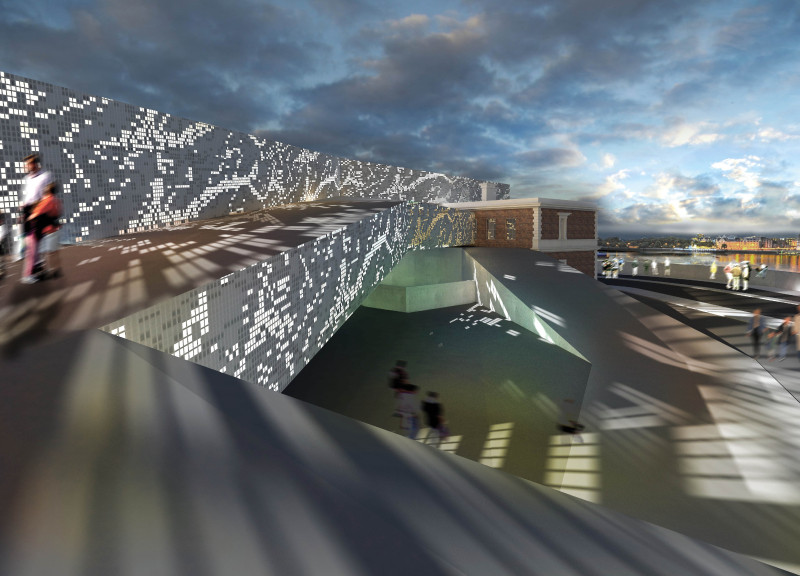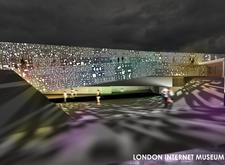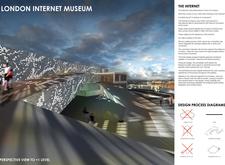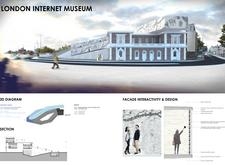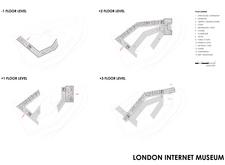5 key facts about this project
## Overview
The London Internet Museum serves as a dedicated space for exploring the historical and cultural significance of the digital revolution within the urban fabric of London. Designed to function as both a museum and educational hub, the project emphasizes interactivity and community engagement, fostering a deeper understanding of the Internet's impact on contemporary society. The architectural layout and design concepts are rooted in themes of connectivity, paralleling the structure of the digital world it seeks to represent.
### Spatial and Functional Design
The architectural strategy employs a multi-layered layout that facilitates seamless movement between indoor and outdoor environments. Open exhibition areas, dynamic workspaces, and community engagement zones encourage participation and interaction among visitors. The design incorporates terraces and walkways that serve as connective pathways, reflecting the relational nature of digital networks. Zones are allocated for showcasing digital artifacts, conducting workshops on internet literacy, and providing spaces for social interaction through cafés and lounges.
### Materiality and Sustainability
The material selection aligns with principles of sustainability and modern aesthetics. Concrete forms the structural foundation, while expansive glass panels ensure ample natural light and visual transparency. The integration of steel in cantilevered sections enhances the building's structural integrity. Additionally, the use of perforated acoustic panels improves sound control, and smart glass technology contributes to energy efficiency and visual engagement. Polished concrete flooring complements the modern industrial aesthetic, reinforcing the museum's conceptual ties to contemporary digital practices.


